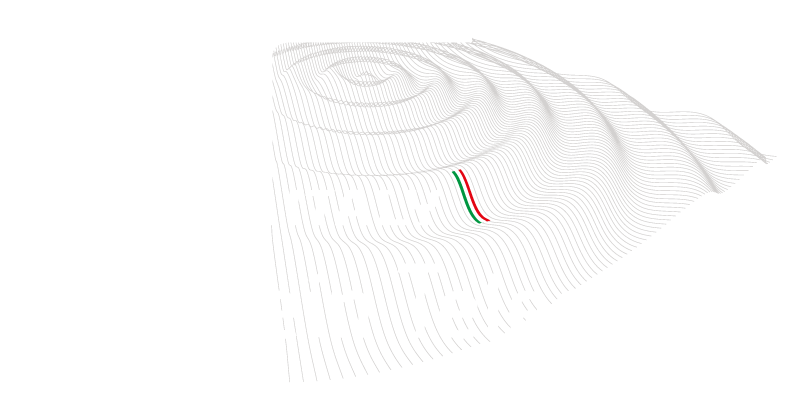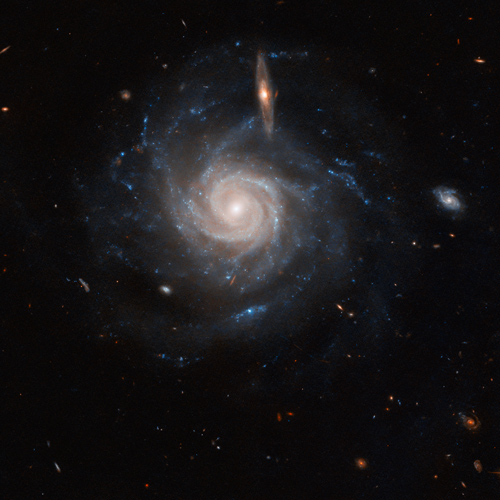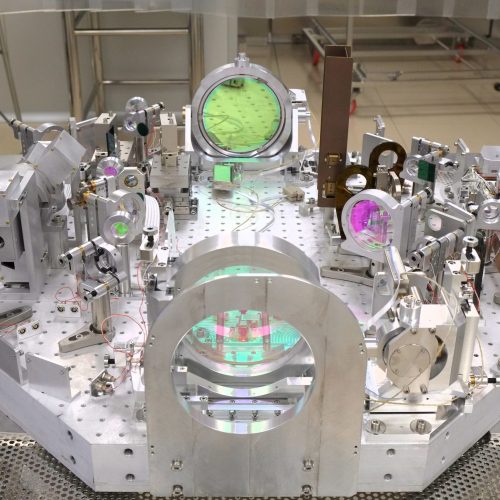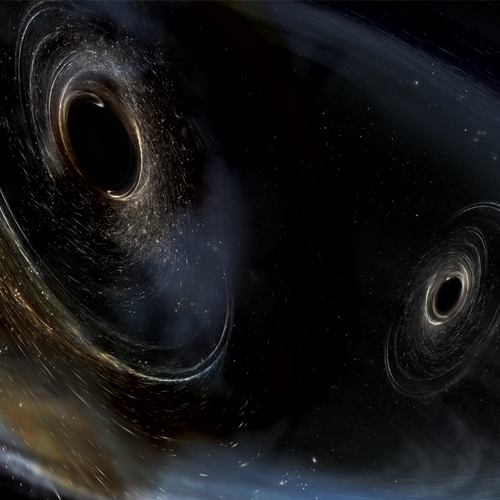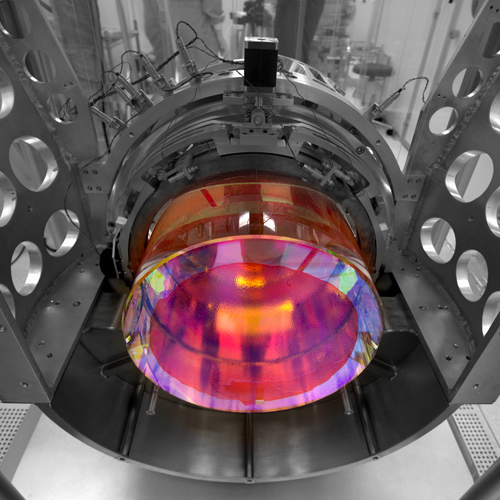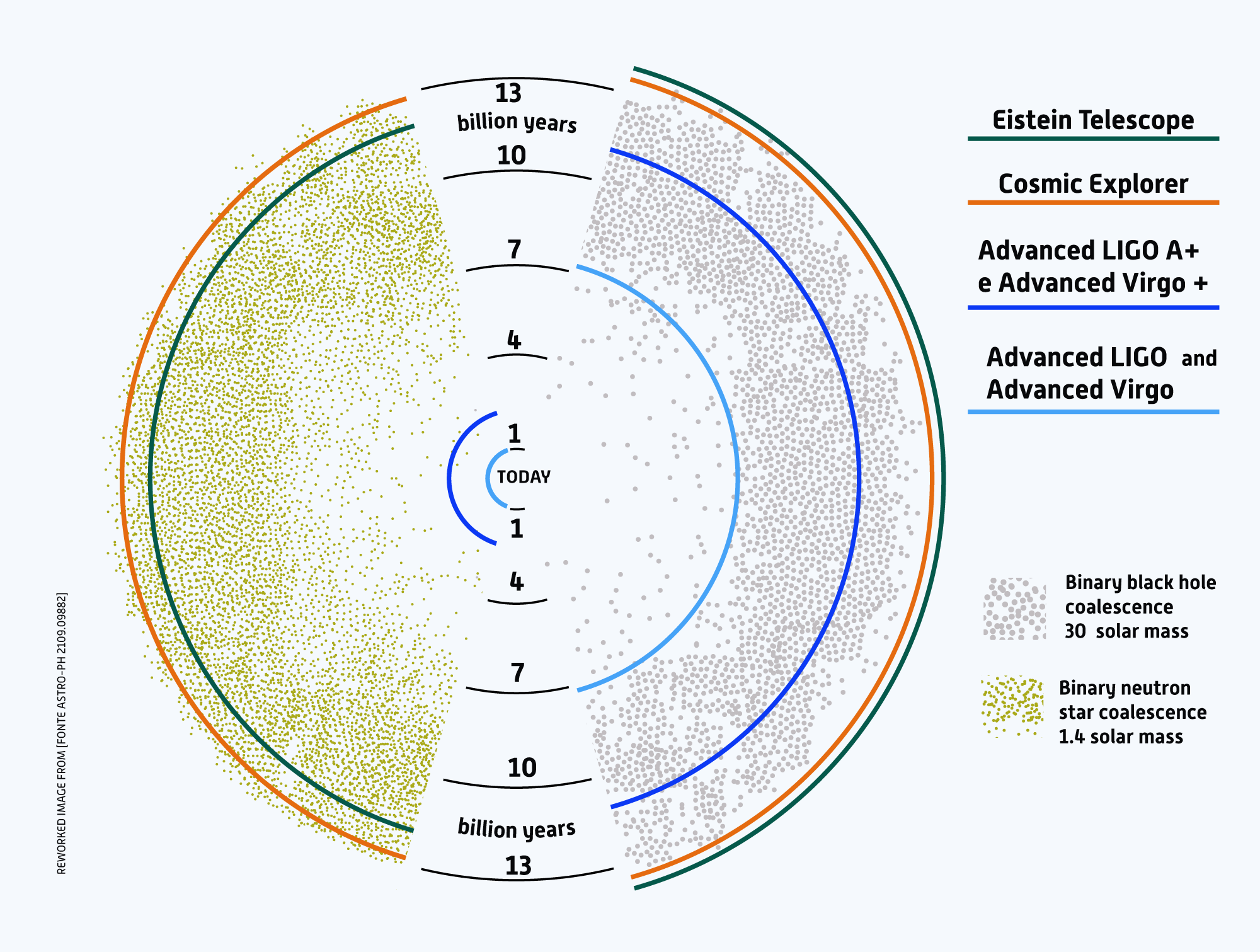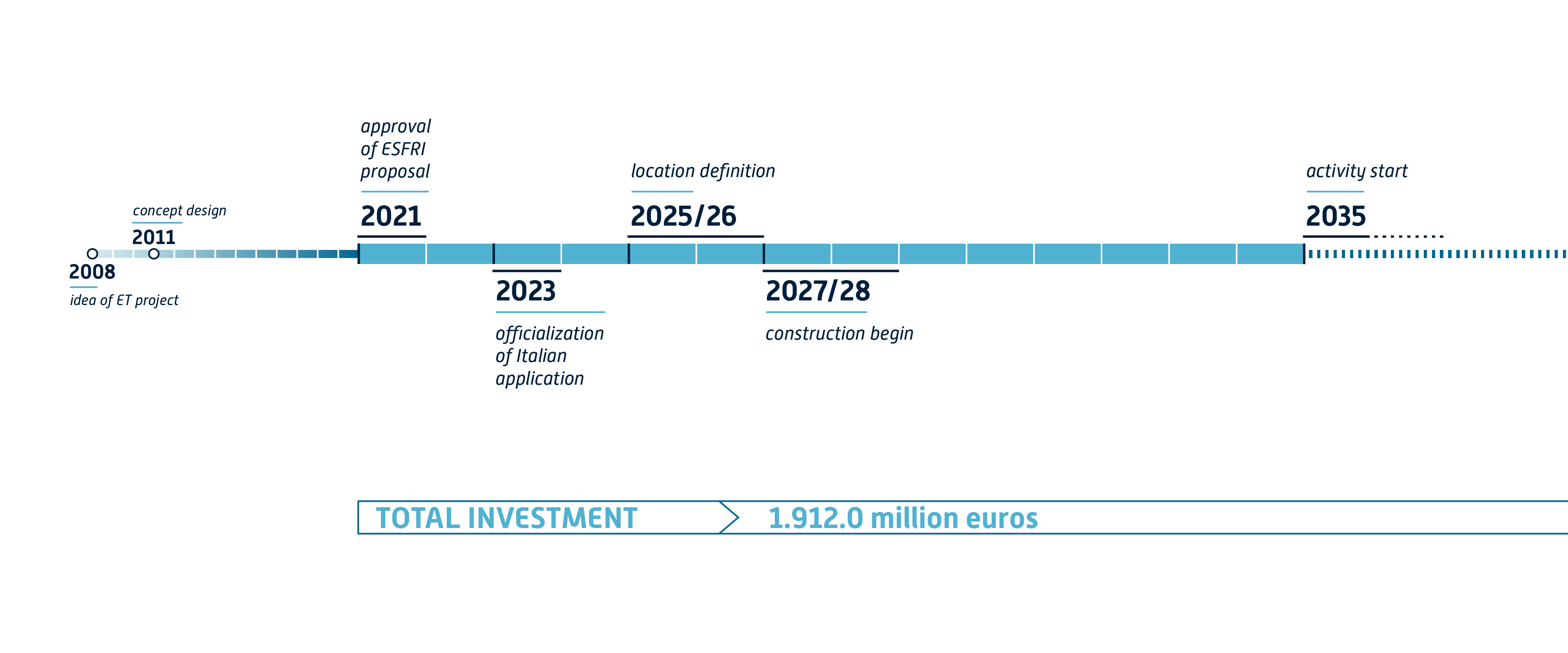The Einstein Telescope is one of the leading European research projects with global scientific impact, and Italy is a candidate to host it in Sardinia in the area of the disused Sos Enattos mine in the area of Nuoro. It is a large underground facility for a third-generation gravitational wave detector, which will be able to observe a volume of the universe about one thousand times larger than current second-generation instruments, the LIGO interferometers in the United States and Virgo in Italy. In 2015, these scientific collaborations observed gravitational waves for the first time, predicted 100 years earlier by Albert Einstein, a discovery that was awarded the Nobel Prize in Physics in 2017.
Einstein Telescope
The Project
The Einstein Telescope is so named because it is an instrument that will be used to “observe” gravitational waves coming to Earth from deep space. It is dedicated to Albert Einstein, who first hypothesised these waves’ existence as a result of his theory of general relativity. The ET, rather than observing, will be listening to the universe; gravitational waves are in fact like the voice, the echo of the most extreme astrophysical events happening in the cosmos, such as the coalescence of black holes or neutron stars, or supernovae explosions.
The ET project involves the construction of a large underground facility that will house a gravitational wave detector between 100 and 300 metres deep to keep it in “silent” conditions, isolating it from the vibrations produced by both seismic waves and human activities, which constitute what is called “noise”, a source of disturbance for the measurements to be made by the ET.
The idea of the ET project builds on the success of the current LIGO and Virgo detectors, the observations of which -since 2015 (the year gravitational waves were discovered) to the present day – have revolutionised the way one studies the universe. These detectors opened the era of gravitational astronomy (the study of celestial bodies and the cosmos through gravitational waves) as well as multimessenger astronomy (the study of the same astrophysical phenomenon through information from multiple cosmic messengers): gravitational waves, electromagnetic radiation, and neutrinos. Discoveries concerning gravitational waves, in which Italy has been a leader thanks to the Virgo experiment, located at the European Gravitational Observatory near Pisa, have made this area of fundamental research one of the most promising.
Compared to current interferometers, the ET will be able to observe a volume of the universe approximately one thousand times larger. Due to the prospects it may open up in terms of both new scientific knowledge and technological innovation, it is considered a flagship project at the international level. As a result, thanks to an Italian-led proposal supported by Belgium, the Netherlands, Poland, and Spain, it was included in the Roadmap 2021 developed by ESFRI (the European Strategy Forum on Research Infrastructures), the European body that provides advice on which crucial scientific infrastructure investments should be made in Europe.
The Scientific Goals
The Einstein Telescope is a fundamental research project and, therefore, its primary and overriding mission is scientific. Its goal is to study the universe with gravitational waves, through its history, tracing it back to the time when light appeared, to understand its origin, how it formed and evolved and what its future will be.
To date, we know just under 5% of the universe: the ordinary matter which it is made of and everything one can observe in the cosmos. Of the remaining 95% or so, one knows practically nothing; one can only conclude from current observations that there is another kind of matter (the dark matter), and an energy, (the dark energy), both of unknown nature. The Einstein Telescope may help to test several hypotheses: for instance, primordial black holes or axions as hypothetical candidate components of dark matter, which accounts for 25% of the universe but the nature of which is today one of the biggest unresolved questions. Another important scientific goal that the ET will be able to achieve, paving the way to understand the big bang, and thus the origin of the universe, is the measurement of cosmological parameters related to its expansion. Thus, it will shed light upon the issue of dark energy, of which one only knows that it alone accounts for more than 70% of the universe and significantly affects its evolution.
By observing a volume of the universe, a thousand times larger than that which can be studied with current second-generation gravitational detectors, the ET will be able to detect an impressive number of signals from the coalescence of both neutron stars and black holes. Tt will thus foster the understanding of the nature of the most extreme astrophysical objects. Through them, the ET will contribute to the study of the stars from which they originated, going all the way back to the first stars in the universe. The ET will, for the first time, make it possible to explore the universe along its cosmic history, going back in time to the dark age of cosmology, when stellar and galactic sources of photons had not yet formed, thus shedding light on the processes that have shaped its history.
The ET will enable the detection of expected but yet unobserved phenomena such as continuous emission from neutron stars, supernova explosions, as well as the measurement of the cosmological or astrophysical background of gravitational waves. It will thus be possible, for instance, to study the ways in which black holes form, their characteristics, and their evolution. The detection of many gravitational signals from neutron stars, in addition, will provide a true nuclear physics laboratory, with characteristics not achievable on Earth, in which the behaviour of matter under extreme conditions can be studied. Detecting a large number of these events will, moreover, allow to do population studies of black holes and neutron stars and, thus, to carry out veritable demographic analyses of the universe.
With the ET, one will also be able to test the limits of general relativity in extreme environments and understand whether it is possible to pave the way toward its unification with quantum mechanics. The irreconcilability between macrocosm and microcosm is one of the great unresolved problems of fundamental physics.
Technique and Technologies
The Einstein Telescope will be a gravitational wave detector based on the successes of the laser interferometry technique used in the second-generation LIGO and Virgo experiments. However, its sensitivity will be greatly enhanced compared to current experiments by increasing the size of the detector and implementing new and innovative technologies.
The original design idea envisages a triangular-shaped detector with 10-kilometre sides. Along its underground arms, inside ultra-high vacuum tubes, laser beams will flow and will be reflected by highly polished mirrors, to be, finally, recombined and form, overlapping each other, the so-called interference pattern.
When a gravitational wave passes through the interferometer, the length of the arms oscillates and, as a result, the laser beams travelling inside them take paths of different lengths; therefore, the interference pattern obtained from their recombination changes. The ET will measure these changes, which are infinitesimal, a fraction of a billionth of an atom’s diameter. To make such precise measurements, the ET requires state-of-the-art technology, created ad hoc through research and development conducted by the research community together with industry. The scientific collaboration is currently studying the technologies that will be needed by the Einstein Telescope, its geometry and configuration.
In addition to a triangular-shaped interferometer, to be built on a single site, experts are also considering the possibility of the L-shaped configuration, such as that of current interferometers. In the latter case, the project would involve twin interferometers, such as the current U.S. interferometers, which would be built at two separate sites at a sufficient distance from each other. As a result, the effectiveness in locating the astrophysical source of the gravitational wave in the sky can be enhanced.
The International Scientific Collaboration
The field of gravitational waves is one of the most promising areas for research in fundamental physics, astrophysics, nuclear physics, and cosmology. It is, therefore, not surprising that a project with such a wide impact in terms of knowledge and innovation as the Einstein Telescope has already attracted the scientific and technological interest of a large and heterogeneous international community, both European and global.
The ET needs institutional and political support and the synergy of scientific and industrial expertise, such as all large-scale scientific projects that stem from a deep capacity for future vision and innovative design, which is based on large experiments and requires considerable joint investments.
The ET’s ESFRI project is organised as a consortium, led by Italy and the Netherlands, with the political support of Belgium, Poland, and Spain. The ET community, which has been active for more than 15 years, has been organised into an international scientific collaboration since 2022. Such collaboration consists of more than 1,800 experts, researchers, engineers, technicians, and data scientists, belonging to more than 250 institutions spread across 31 nations, both in Europe (Czech Republic, France, Germany, Greece, Hungary, Switzerland, and United Kingdom), and worldwide.
Currently, the work of scientists, engineers, and technicians is focusing on the study of the configuration of the detector, designing and developing enabling technologies, in order to prepare the data analysis methods, and build the astrophysical models that will be used to interpret the measurements and data collected. In addition, characterisation studies are underway for the candidate sites to host the Einstein Telescope: one in Sardinia, in the area of the disused Sos Enattos mine in the Nuoro region, one near the border between the Netherlands, Belgium, and Germany, and the other in Saxony, in eastern Germany (the latter candidacy has been proposed to the scientific community, but has not yet been formalized).
1800
31
264
Timeline and investments
Banner Image: simulation of a supermassive black hole. Credit: Goddard Space Flight Center della NASA.
